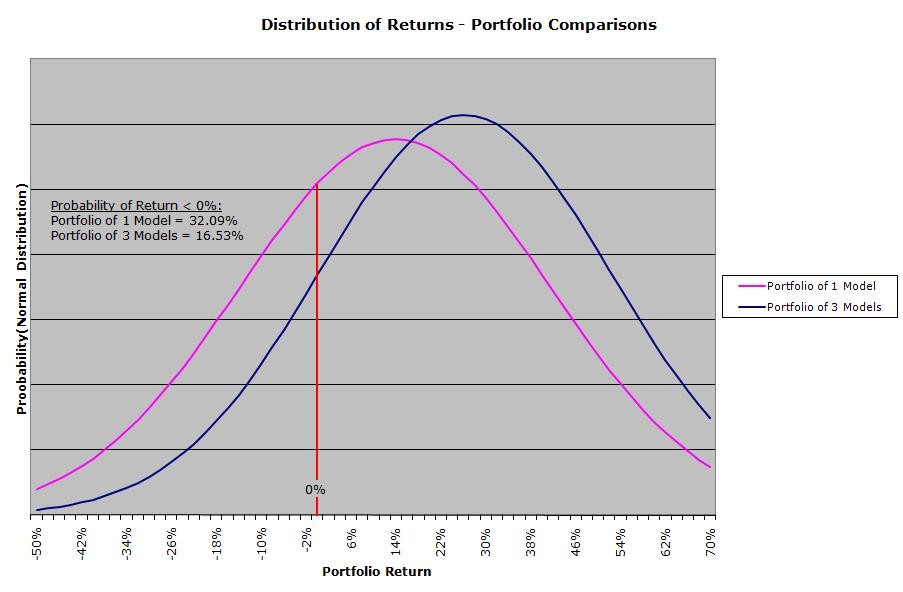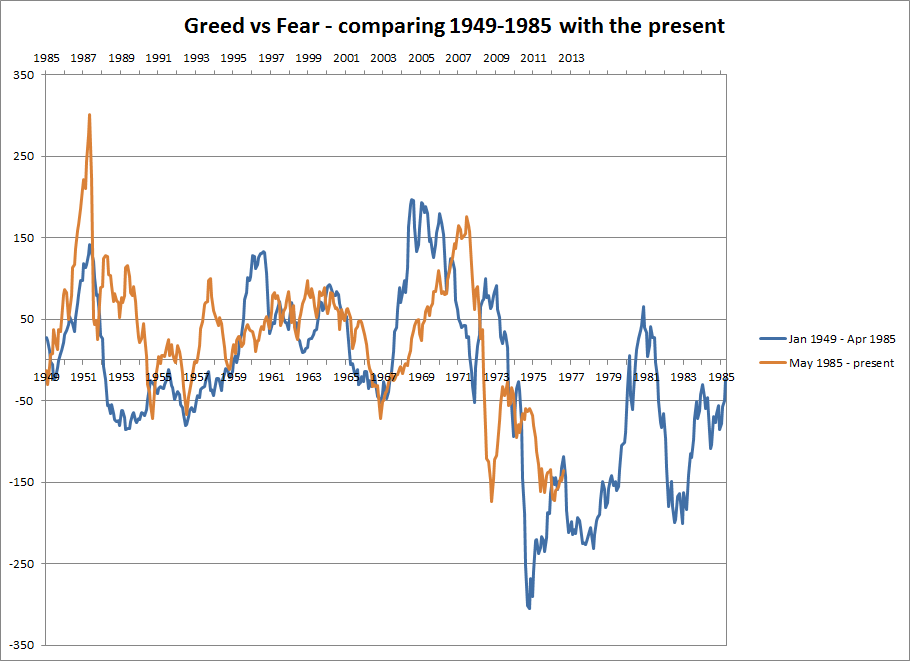Measuring Hedge Fund performance Active Returns versus Alpha Your Own Hedge Fund
Post on: 19 Май, 2015 No Comment

June 8, 2010 by Andrew
There a large number of measures available to the Hedge Fund manager (and those who assess the performance of hedge funds) in determining and presenting their performance. These measures include:
- Average monthly returns
- Standard deviation of monthly returns
- Average Annualised Compound returns
- Annualised Standard Deviation of returns
- Sharpe Ratio [ (Return — risk free rate) / Standard deviation of return ]
- Maximum Drawdown
- Maximum Recovery Period (Months)
- Sortino Ratio [ (Return — risk free rate) / Downside Standard deviation of return ]
While I gather and review all of the information above, for public presentation I stick to just a few measures.
From the simplest:
- fund return for the month,
- fund return for the past 12 months, and
- fund return since inception.
To the more complex:
- Alpha (Stock Selection) performance,
- Marketing Timing performance, and
- Cumulative Active performance.

While I believe the first three measures dont require explanation, it would be remiss of me to continue reporting on the last three assuming that anyone who reads this site has an understanding of their meaning and method of calculation or even why I present them as performance measures. This is possibly exacerbated by comments, such as one I included in the May 2010 performance reports against the Market Timing performance results, where I wrote a ‘terrible’ month. I used greater than average leverage in a month in which the markets were down, causing a very poor ‘market timing’ performance of -12.81% for the month. And this comment in a month with a return of 3.5% when the markets were down about 8%!
You may be aware of Alpha with regard to Hedge Fund (or any fund) performance measures. Alpha (or Jensens alpha) is a measure of the abnormal or excess return of a portfolio over its expected return. At its simplest, it measures how well the fund manager beat the market, and is commonly used as a measure for investment funds that are required to be 100% invested.
However, a hedge fund manager has options. Many options. She can invest in a variety of instruments, take LONG or SHORT positions, and adjust her exposure to the market at any time. The investment performance of hedge funds are a combination of both market exposures, and active return (most commonly Stock selection) exposures. For example, a hedge fund manager may use 2 x leverage and invest in an index fund. During months in which the index return is positive, the fund return will be greater than the index (this is not always true, as Ill explain later). If the index returns is negative, the fund return will be more negative (this IS true). In this case, the hedge fund has been passive, and therefore has no Active Return exposures. The funds performance relative to the market will be based entirely on their Market Exposure.
Another hedge fund manager may always be 100% LONG within a market, but trade in and out of positions constantly. This manager will have zero Market Timing performance, as they are always exposed exactly 100% to the market, so any excess return (or shortfall return) will be solely due to their Active Return on individual stocks. This is why Alpha is often used to measure the performance of investment or superannuation funds.
Lets consider a third example: Consider a Long Short hedge fund which averages 50% net long exposure to global share markets. 50% Net Long means that its average position is to have 50% of its funds under management in Long positions, and could mean they are 100% Long and 50% Short (through the use of Leverage). If the global share markets were down 20% in a year, then this funds Market Exposure bias would contribute -10% to expected performance for the hedge fund manager. So no matter how good the manager may be, because of its pre-stated requirement to be 50% Net Long, the fund performance will be reduced due to its Market Exposure. If this fund happens to return 0% in the year, then it could be argued that it has had a fantastic year, despite not growing the fund at all.
Alpha (Stock Selection) Performance
So how do I measure Alpha and gauge my Stock Selection performance? I use the following formula:
Alpha (Stock Selection) performance = Fund Performance [(Avg Net exposure x Market Performance) + ((1-Avg Net exposure) x cash rate)]
For example, if the Sycamore Fund returned 2% in a month in which its Average Net Exposure was 35%, the Market return -4%, and the cash rate is 6% per annum (0r 0.5% per month), then my Alpha performance would be:
= 2% [(35% x -4%) + (65% x 0.5%)
= 2% — [-1.4% + 0.325%]
= 3.075%
In other words, if I had not invested actively, I could have invested 35% of my funds in a market index, and 65% in Cash. The market would have returned me -1.4%, and the cash would have returned 0.325%, giving me a total return for the month of -1.075%. As my Actively managed fund returned +2%, then my excess or abnormal returns due to my stock selection skills (or maybe luck) was 3.075%.
Market Timing Performance
To determine my Market Timing performance, I first need to know one more variable: How much of my fund, over the very long-term, do I expect to have invested in the market? Or, what is my Average Net Exposure? In this case, we will assume that this funds stated Average Net Exposure is 50%. So, measuring Market Timing performance will show us how well we are timing the market, and can be measured using the following formula:
Market Timing Performance = Fund performance Alpha [(Average long-term net exposure x Market performance) + (1-Average long-term net exposure x Cash Rate)]
Continuing with our Sycamore Fund example, this would equal:
= 2% 3.075% [(50% x -4%) + (50% x 0.5%)]
= -1.075% [-2% + 0.25%]
= 0.675%
So what this means, is that the decision to invest less than our long term average in a month in which the market returns were negative was a good decision, and delivered 0.675% in returns to the fund.
Total Active Performance
is simply equal to Alpha (Stock Selection) Performance + Market Timing Performance, and therefore in the above example would equal 3.075% + 0.675% = 3.75%. Please note: over time, with month to month measures, the equals sign in this measure becomes approximates.
For my own performance, Ive been pretty good at Stock Selection (as driven by my Quantitative models), but not good at Market Timing. Im starting to read a little more about Market Condition and test the suitability of my models to various Market states. Its a subject Van Tharp covers in his books, which I hope to review at some time.
The above may be confusing, and may include mistakes (Ill recheck my calculations in the next few days), but it may help you measure the performance of your own fund, or discern the relative performance of hedge funds in which you hope to invest.
Fell free to get in touch with me with any comments or question,
Andrew
P.S Much of the above comes from the course Hedge Funds at Macquarie Universitys Applied Finance Centre, and was prepared originally by David Bell.














